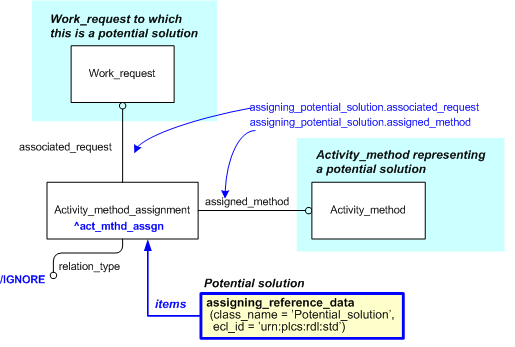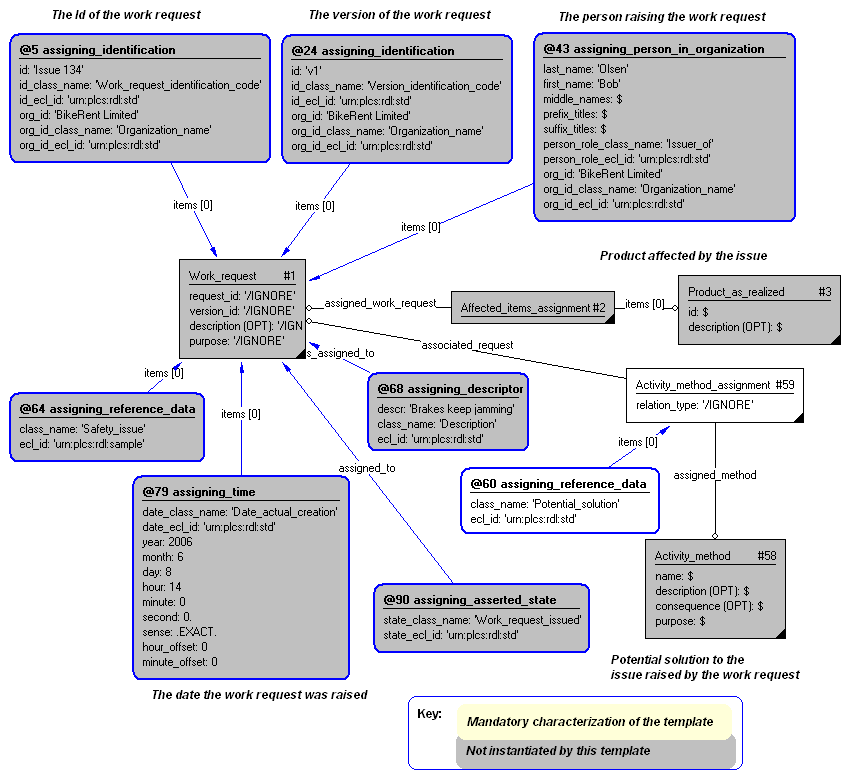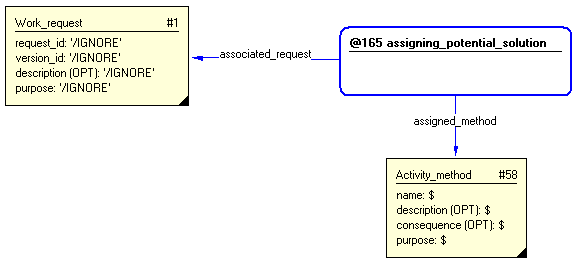Template:— assigning_potential_solution (asg_sol)
Capability:representing_work_request |
Date: 2007/09/28 12:44:06
Revision: 1.10
|
This section specifies the template assigning_potential_solution.
NOTE
The template has been defined in the context of the capability
representing_work_request
which provides an overall description of the
relevant parts of the ISO 10303-239 information model and a description
of related templates.
NOTE
An explanation of a template and the associated instantiation path is
provided in the
Template overview
section.
This template describes how to represent a proposed solution for a work request.
The EXPRESS-G diagram in
Figure
1
shows the templates and EXPRESS entities that are required
to represent the template
"assigning_potential_solution".
The text highlighted in blue shows the template parameters.
Figure 1 — An EXPRESS-G representation of the Information model for assigning_potential_solution
The graphic for the template to be used in other EXPRESS-G diagrams
is shown in Figure
2
below.
Figure 2 —
The graphical representation of assigning_potential_solution template
The following input parameters are defined for this template:
The following reference parameters are defined for this template:
%^target = $assigning_potential_solution.act_mthd_assgn%
The instantiation path shown below specifies the entities that are to be
instantiated by the template.
A description of templates and the syntax for the instantiation path is
provided in the
Templates Help/Information section.
The following entities are instantiated with attributes as specified:
The instance diagram in Figure
3
shows an example of the EXPRESS entities and templates that are instantiated by the template:
/assigning_potential_solution(value='Bike must be light-weight')/
(an illustration of the consolidated assigning_potential_solution template is shown in
Figure
4 below.)
Figure 3 — Entities instantiated by assigning_potential_solution template
The instance diagram in
Figure
4
shows the graphic symbol for the template that is to be
used in other instance diagrams. The example template is:
/assigning_potential_solution(value='Bike must be light-weight')/
Figure 4 — Instantiation of assigning_potential_solution template
Characterizations
No common characterizations of the template
assigning_potential_solution
have been identified. However, the ISO 10303-239 EXPRESS model
may enable other assignments to the entities instantiated by the template.




